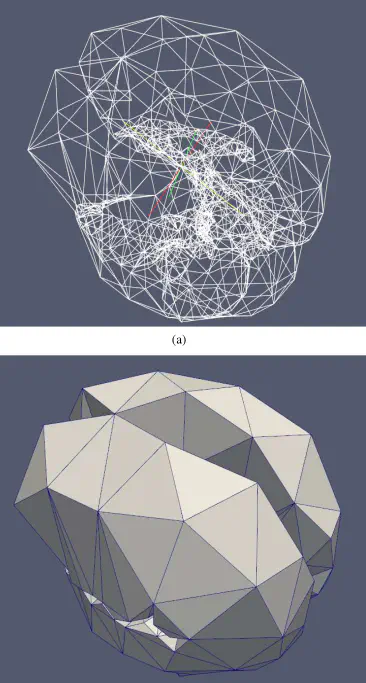Approach-guided controlled resolution brain meshing for FE-based interactive neurosurgery simulation

Abstract
This paper presents an adaptation of a two-stage tetrahedralization,featuring boundary-faithful controlled-resolution surface and volumetric meshing, suitable for multi-grid finite-element based neurosurgery simulator, whose architecture reflects the choice of neurosurgical approach and the nature of the pathology. Moreover, the first application of our approach-guided methodology is a simulation of the pterional approach, which entails a brain mesh that is separable about the left or right Sylvian fissure, providing access to deep-seated lesions. In addition to this sulcal separability constraint, the emphasis of this procedure on lesions in the skull base also suggests that the meshing should model ventricles faithfully. However, another requirement that conflicts with the faithfulness to these sulcal and ventricular boundaries is the need to limit the number of tetrahedra, at the coarsest level, in order to produce an interactive yet materially and geometrically nonlinear response, which will be achieved by GPU-accelerated Total Lagrangian Explicit Dynamics. Finally, we view a controlled resolution as a cornerstone of a multi-grid approach to the simulation, which in turn we view as a necessity, given also the conflicting requirements of having to compute a deformation on a relatively large organ such as the brain, while also capturing finely detailed critical tissues, such as blood vessels, deleterious gestures to which must be penalized by the simulation.